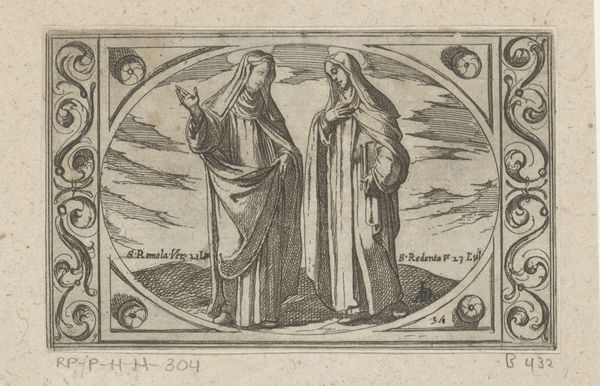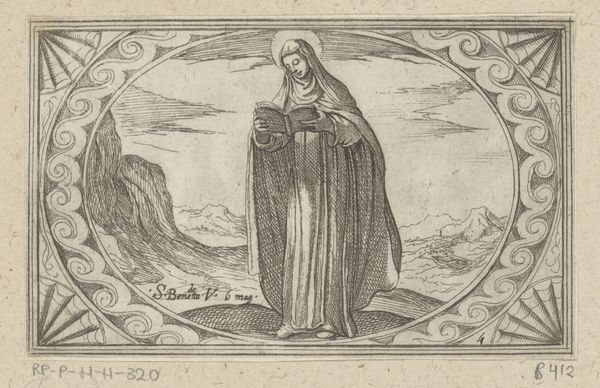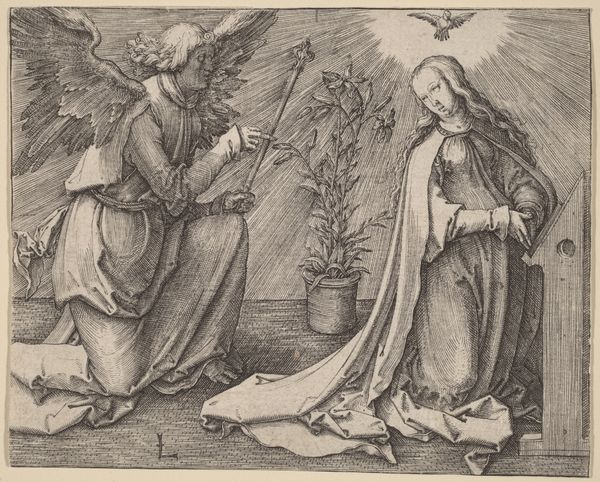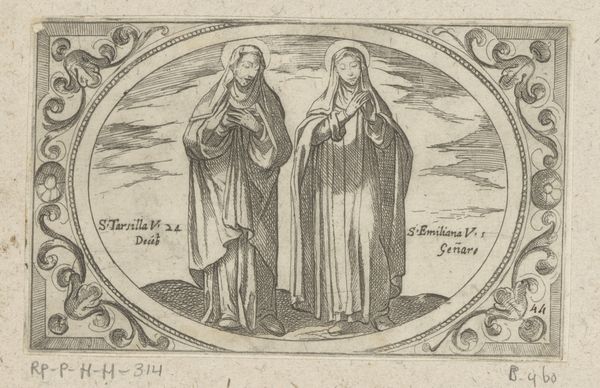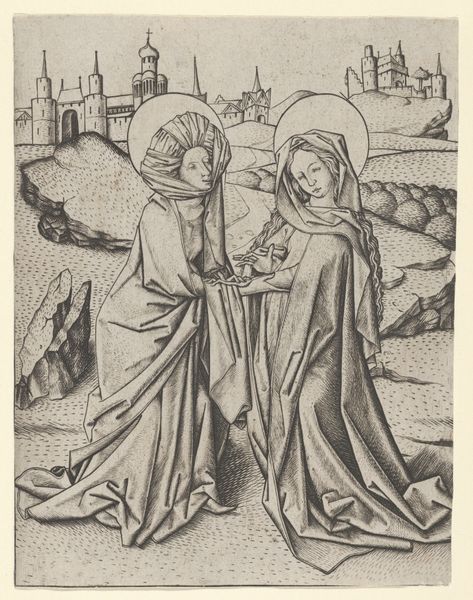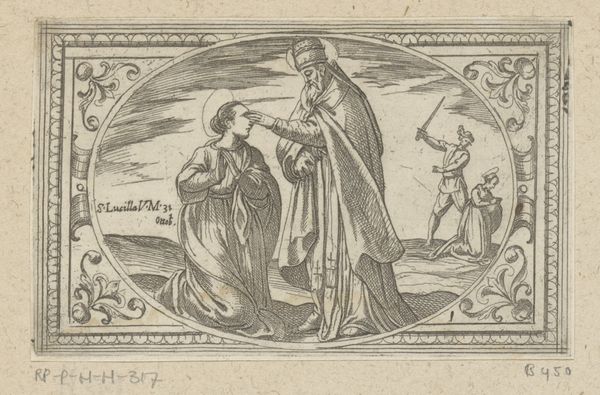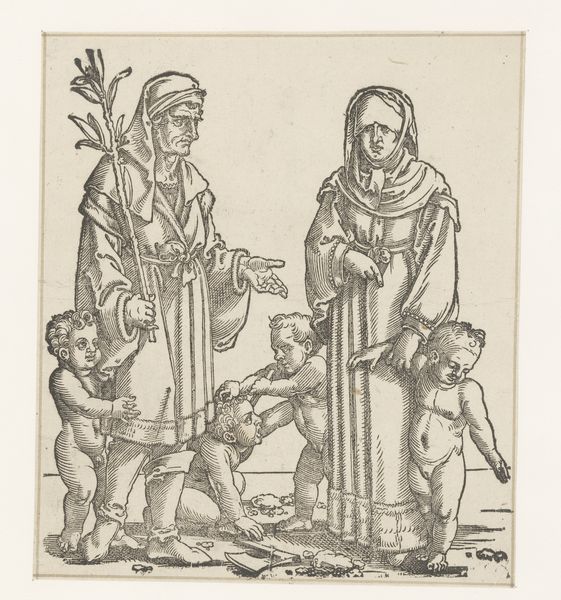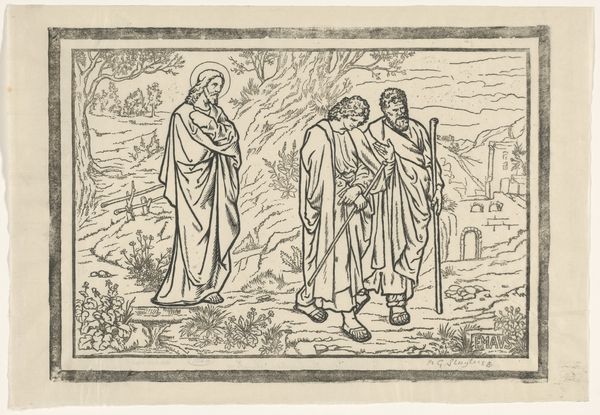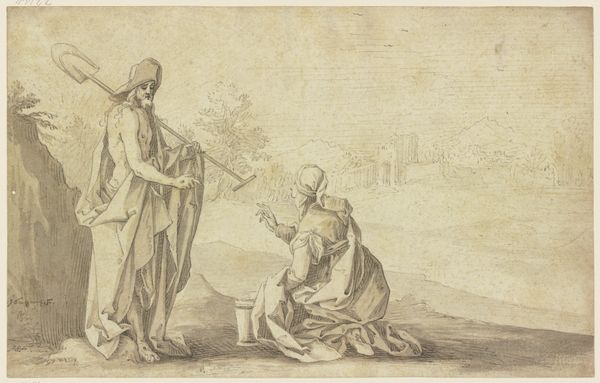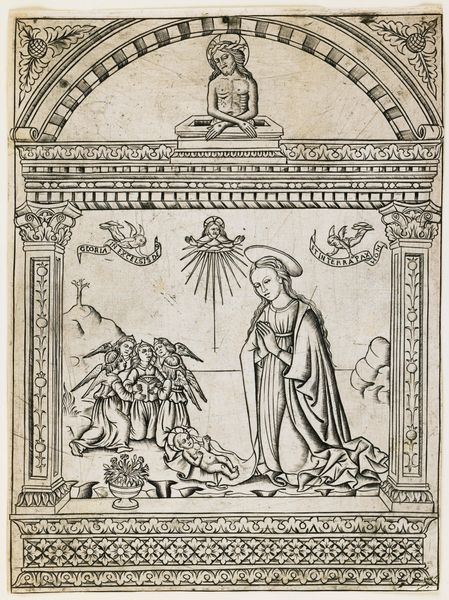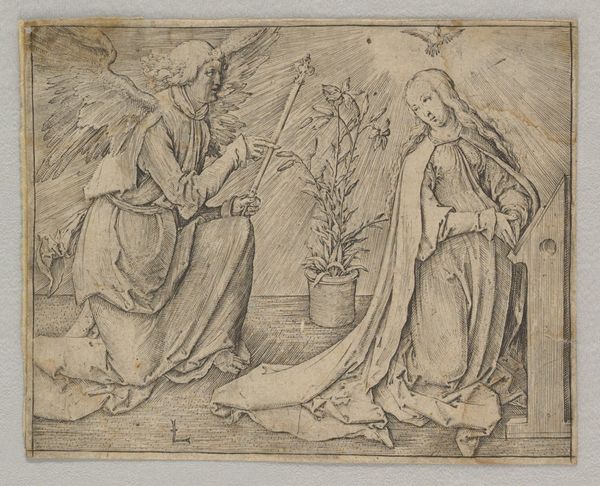
A Nun and a Friar, from Das Bossenbüchlein 1577 - 1587
0:00
0:00
drawing, print, ink, engraving
#
drawing
#
medieval
#
narrative-art
# print
#
figuration
#
ink
#
line
#
engraving
Dimensions: Sheet: 2 3/8 × 3 5/16 in. (6 × 8.4 cm)
Copyright: Public Domain
Curator: Look at this fascinating 16th-century engraving attributed to Mathais Beitler titled, "A Nun and a Friar, from Das Bossenbüchlein," currently housed at The Met. It immediately evokes a certain formality and rigidness. Editor: Yes, my first impression is struck by the lines and monochrome of the image, giving it a simple yet striking texture, a limited palette emphasizing texture, making you focus on form, the way the subjects' garments are illustrated through line. Curator: It's interesting how these engravings gained popularity during the late Medieval and Renaissance periods because printmaking allowed for wider dissemination of images. This specific print appears to come from a book of sorts given its title “Das Bossenbüchlein," and the presence of the figures certainly suggests social commentary about religion. Editor: Exactly. Engravings like this required incredible skill. I wonder about the workshop and labor conditions—who prepared the metal plates, the ink? There are obvious material choices to translate image to line in order to represent status and religious commitment of the figures. Curator: This also raises a point on the changing dynamics of the Reformation, where art became a site of public debate and instruction. The juxtaposition of a nun and a friar may subtly question religious authority or offer a moral lesson to the contemporary viewer during a period of massive upheaval within the Christian church. Editor: Perhaps the placement of these characters says more. We see buildings placed in the mid-ground on either side and one older Friar is located by himself to the side. So the artist is purposefully displaying relationships in this piece using materials available to represent that status in society, labor relations to create it, the use of simple lines that the masses would understand to further religious undertones in that time. Curator: Absolutely. The work encapsulates not just a religious theme but offers commentary of that period to what happens during that time, a mirror to the viewer to examine one's beliefs as well. It speaks volumes about the Reformation's impact on the daily life of people during that time. Editor: In examining materials and means of production, we can deepen our understanding of the piece in addition to this insight on religion during the 1500s. A small work offering big commentary.
Comments
No comments
Be the first to comment and join the conversation on the ultimate creative platform.
